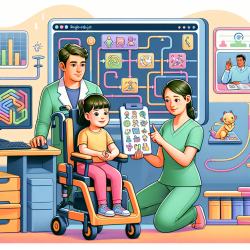The role of paid parental leave in enhancing family wellbeing is a topic of growing interest among practitioners and policymakers alike. As we strive to meet the Sustainable Development Goals (SDGs), understanding the impact of such policies on maternal and child health becomes crucial. This blog explores key findings from a comprehensive research article titled Paid parental leave and family wellbeing in the sustainable development era, offering insights for practitioners looking to improve their skills or delve deeper into this area.
The Importance of Paid Parental Leave
Paid parental leave is not just a benefit for new parents; it's a policy with far-reaching implications for society. Research has shown that it supports various SDG outcomes, including reducing poverty (SDG 1), improving health (SDG 3), achieving gender equality (SDG 5), promoting decent work (SDG 8), and reducing inequalities (SDG 10). By allowing parents to take time off work while maintaining income, paid parental leave can significantly impact maternal and infant health.
Key Findings from the Research
- Infant Health: Longer periods of paid maternity leave are associated with lower infant mortality rates. This is particularly evident in low- and middle-income countries, where each additional month of paid maternity leave can significantly reduce infant deaths.
- Breastfeeding: Paid parental leave facilitates longer breastfeeding durations, which are critical for infant health. Studies have shown that extended leave increases the likelihood of exclusive breastfeeding for at least six months.
- Immunizations: There is evidence suggesting that paid leave can improve immunization rates by allowing parents more time to ensure their children receive necessary vaccinations.
- Maternal Health: Paid leave supports mothers' physical recovery post-childbirth and reduces the risk of postpartum depression. It also encourages breastfeeding, which has additional health benefits for mothers.
- Gender Equality: Policies that include paternity leave encourage shared caregiving responsibilities, promoting gender equality both at home and in the workplace.
Implications for Practitioners
Practitioners working with families can leverage these findings to advocate for better parental leave policies. By understanding the benefits outlined in the research, practitioners can support families more effectively and contribute to broader societal goals.
- Policy Advocacy: Encourage local and national governments to implement or strengthen paid parental leave policies that align with international standards.
- Education: Educate families about their rights regarding parental leave and its benefits for both parents and children.
- Research Engagement: Engage in further research to explore how different structures of paid leave impact family wellbeing across various socioeconomic contexts.
The research underscores the need for ongoing monitoring and evaluation of parental leave policies to ensure they meet the evolving needs of families. Practitioners are encouraged to stay informed about policy changes and contribute to discussions on improving these vital supports.
To read the original research paper, please follow this link: Paid parental leave and family wellbeing in the sustainable development era.










